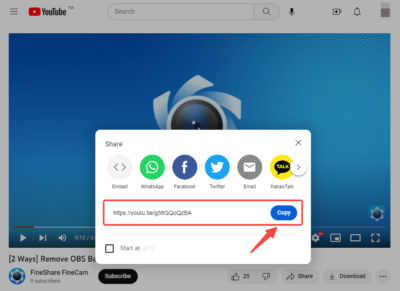I. Introduction:
Using copyrighted content on your website requires adherence to copyright laws and guidelines to respect the rights of content creators. Alamy is a prominent stock photography agency that offers a wide range of images for licensing purposes. Understanding and following the guidelines for incorporating Alamy images on your website is crucial to ensure legal and ethical usage. This guide will provide you with an overview of the guidelines and best practices for using Alamy images on your website while respecting copyright laws and maintaining the integrity of the content.
Incorporating copyrighted content, such as images, on your website requires a thorough understanding of copyright laws and adherence to guidelines provided by the copyright holders. Alamy, a well-known stock photography agency, offers a vast collection of licensed images for various uses. It is crucial to follow specific guidelines when using Alamy images on your website to ensure that you respect the rights of content creators and maintain legal compliance.
Also Read This: YouTube Sales Mastery: Selling on Amazon from Alibaba Explained
II. Obtaining Proper Licensing:

To incorporate Alamy images on your website, it is essential to obtain the appropriate licensing. Alamy is a stock photography agency that grants licenses for specific uses of their images. Without proper licensing, you risk infringing on the copyright holder's rights.
To acquire the necessary license, you can purchase it directly fromonl
Alamy or the copyright holder, depending on the arrangement. The licensing process ensures that you have the legal rights to use the image in accordance with the terms specified in the license agreement.
By obtaining proper licensing, you not only protect yourself from legal consequences but also support and acknowledge the work of content creators who have put time and effort into producing these images. It is crucial to respect and honor their rights by obtaining the appropriate licensing before incorporating Alamy images into your website.
Also Read This: Unlocking International Opportunities on Adobe Stock: Expanding Your Reach Beyond Borders
III. Reading and Following License Terms:
When using Alamy images on your website, it is vital to carefully read and understand the license terms associated with each image. The license agreement outlines the specific permissions, restrictions, and conditions for using the image within the bounds of copyright law. By following these terms, you can ensure that your usage of the image remains lawful and ethical.
1. Allowed Usage: The license terms specify how you can use the image. It may define whether it is for editorial or commercial purposes, online or print usage, or limited to a specific audience or geographic region.
2. Duration: The license terms indicate the duration or time period during which you are allowed to use the image. Make sure to comply with this timeframe and remove the image from your website once the license expires.
3. Restrictions: The license may impose certain restrictions on the image usage, such as prohibiting its use in certain contexts or industries. Take note of any restrictions mentioned in the license and ensure compliance.
4. Attribution Requirements: Some licenses may require you to provide attribution or credit to the photographer or copyright holder. Pay attention to the specific attribution format specified in the license, and make sure to provide the appropriate credit when using the image.
It is crucial to respect and adhere to the license terms to avoid copyright infringement. Failing to comply with the terms can result in legal consequences and damage your reputation. By carefully reading and following the license terms associated with Alamy images, you can ensure a proper and lawful use of the copyrighted content on your website.
Also Read This: How to Deactivate VK Account? Here’s a Quick and Simple Solution
IV. Crediting the Photographer:
When incorporating Alamy images on your website, it is important to consider the requirement for crediting the photographer or copyright holder. While not all licenses mandate attribution, some do, and it is crucial to comply with these requirements to give proper recognition to the original creator.
1. Check the License Terms: Carefully review the license terms associated with the Alamy image to determine if attribution is required. Look for any specific guidelines provided regarding how to credit the photographer.
2. Attribution Format: If attribution is necessary, follow the specified format or guidelines for providing credit. This may involve including the photographer's name, copyright symbol, and a link to their portfolio or website. Be sure to accurately and prominently display the attribution information alongside the image or in a designated credits section on your website.
3. Consistency and Visibility: Ensure that the attribution is consistently applied across your website, especially if you are using multiple Alamy images. Make sure the credit is clearly visible and legible, respecting the size and placement guidelines provided in the license.
4. Respect the Photographer's Wishes: In some cases, photographers may have specific requests or preferences for how they want to be credited. If such instructions are provided, make an effort to honor their wishes and give credit in the manner they have requested.
Providing proper attribution not only acknowledges the photographer's creative work but also demonstrates your commitment to respecting copyright and intellectual property rights. By following the license requirements for crediting the photographer, you contribute to a fair and ethical use of Alamy images on your website.
This video explains about alamy:
Also Read This: The Insider Guide About If Instagram Notify When You Save a Video from DM
V. Best Practices for Incorporating Alamy Images on Your Website:
When using Alamy images on your website, it's important to follow best practices to ensure a seamless integration and to respect copyright guidelines.
1. Resizing and Optimizing: Before uploading Alamy images to your website, resize and optimize them for web use. This helps in reducing the file size without compromising the quality, resulting in faster loading times and better user experience.
2. Proper Display and Integration: Ensure that the Alamy images are displayed appropriately within the design and layout of your website. Pay attention to factors like image resolution, alignment, and responsive design to ensure that the images are visually appealing and well-integrated with the overall website aesthetics.
3. Compliance with Additional Guidelines: In addition to the license terms, Alamy or the copyright holder may provide additional guidelines for using their images. These guidelines may include specific requirements or restrictions for image usage. It is important to carefully review and comply with these guidelines to avoid any infringement and to maintain a positive relationship with the copyright holder.
4. Regularly Review and Update Licenses: Keep track of the licenses for the Alamy images used on your website and ensure they remain valid. Periodically review and update the licenses as needed, especially if you plan to continue using the images beyond the original license duration.
By following these best practices, you can ensure that the Alamy images on your website are properly optimized, visually appealing, and used in accordance with copyright guidelines. This not only protects you from legal issues but also demonstrates your commitment to ethical and responsible use of copyrighted content.
High Resolution Stock Photography and Images - Alamy https://t.co/5IgIV6RgQa pic.twitter.com/waBFRfvRQy
— Paul Watkins (@PaulWatkins14) January 7, 2023
Also Read This: Is Alamy Good for Selling Photos? Evaluating the Platform’s Effectiveness
FAQ:
1. What are the copyright restrictions on Alamy images?
All Alamy images are copyrighted and owned by Alamy or its contributors. You must have a valid license to use Alamy images on your website.
2. What are the different types of licenses available for Alamy images?
Alamy offers a variety of licenses for its images, including:
- Standard license: This license allows you to use the image for personal and commercial purposes.
- Extended license: This license allows you to use the image for more extensive commercial purposes, such as advertising and marketing.
- Royalty-free license: This license allows you to use the image for any purpose without paying royalties.
3. What are the factors to consider when choosing a license for Alamy images?
The factors to consider when choosing a license for Alamy images include:
- Your intended use for the image: Are you using the image for personal or commercial purposes?
- The type of website you have: Some licenses may not be suitable for certain types of websites.
- Your budget: The cost of the license will vary depending on the type of license and the duration of the license.
4.What are the future trends for Alamy images?
As the use of images on websites and in other media continues to grow, so too will the demand for high-quality images. Alamy is well-positioned to meet this demand, as it offers a wide variety of high-quality images that are available for use on a variety of platforms.
5. How do I add Alamy images to my website?
You can add Alamy images to your website by following these steps:
- Find the image you want to use: You can search for images on the Alamy website or use the Alamy API.
- Purchase a license for the image: You will need to purchase a license for the image before you can use it on your website.
- Download the image: Once you have purchased a license, you can download the image from the Alamy website.
- Add the image to your website: You can add the image to your website using the HTML code provided by Alamy.
6. What are the best practices for using Alamy images on my website?
Here are some best practices for using Alamy images on your website:
- Only use images that you have a valid license for.
- Use the correct attribution for the image.
- Resize the image to fit your website.
- Optimize the image for web use.
- Do not modify the image in any way.
7.How do I get my images featured on Alamy?
There are a few things you can do to get your images featured on Alamy:
- Upload high-quality images: Your images should be high-quality and well-lit.
- Tag your images correctly: Tag your images with relevant keywords so that they can be easily found by people who are searching for them.
- Submit your images to Alamy's curated collections: Alamy has a number of curated collections that feature the best images from its contributors. Submitting your images to these collections is a great way to get them seen by more people.
- Promote your images on social media: Share your images on social media to get more people to see them.
8.What is the difference between a standard license and a royalty-free license?
A standard license allows you to use an image for personal and commercial purposes, but you may be required to pay royalties if you use the image for certain types of commercial purposes. A royalty-free license allows you to use an image for any purpose without paying royalties.
9.What are the different ways to search for images on Alamy?
You can search for images on Alamy in a variety of ways, including:
- By keyword: You can search for images by keyword, such as "beach" or "mountains."
- By category: You can search for images by category, such as "nature" or "business."
- By advanced search: You can use the advanced search features to narrow down your search results, such as by image size, color, or date.
- By image ID: You can search for images by their image ID, which is a unique identifier for each image.
10. What are some tips for using Alamy images on my website to improve its SEO?
Here are some tips for using Alamy images on your website to improve its SEO:
- Use relevant images: Use images that are relevant to the content on your website.
- Optimize the images for search engines: Optimize the images for search engines by using relevant keywords in the image file names and alt text.
- Use image captions: Use image captions to provide additional information about the images.
- Link to the source of the images: Link to the source of the images on Alamy.
Conclusion:
In conclusion, when incorporating Alamy images on your website, it is essential to prioritize legal compliance and respect for copyright guidelines. By obtaining the appropriate licensing from Alamy or the copyright holder, reading and understanding the license terms, providing proper attribution to the photographer or copyright holder, and following best practices for image integration, you can ensure a responsible and ethical use of Alamy images on your website
Remember to regularly review and update licenses to maintain compliance, optimize images for web use, and comply with any additional guidelines provided by Alamy or the copyright holder. By following these guidelines and best practices, you can incorporate Alamy images into your website while upholding the principles of copyright law and fostering a respectful environment for content creators.














